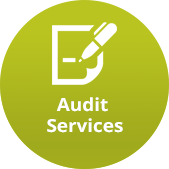September 2014 Newsletter
In this edition:

Dispelling the myths around LRBA capital improvement
What works can be undertaken?
Using funds available in super and borrowing under a LRBA is a common strategy used by self-managed super fund (SMSF) owners to buy property. When utilising this strategy the concept of a single acquirable asset becomes very important. One question we often get asked is what capital works or repairs can be undertaken on a property that is bought using an LRBA while still meeting this requirement.
In this article we will consider what works can be undertaken under a property acquired under an LRBA, but first it is important to understand what is meant by the following terms:
- 'maintaining' – work done to prevent defects, damage or deterioration of an asset, or in anticipation of future defects, damage or deterioration, provided that the work merely ensures the continued functioning of the asset in its present state.
- 'repairing' – remedying or making good defects in, damage to, or deterioration of an asset and contemplates the continued existence of the asset.
- 'improving' – refers to the situation where the state or function of the asset is significantly altered for the better, through substantial alterations, or the addition of further substantial features or rights, to the asset.
When determining what works can be undertaken it is also important to distinguish between works funded by additional borrowings as opposed to works funded by cash already available in the fund.
1. Funds are borrowed under the LRBA to fund the works
An SMSF can use its LRBA to maintain or repair a single acquirable asset but can NOT use borrowed funds to improve the asset. For example:
A residential house is acquired under an LRBA. After a few years a decision is taken to renew the kitchen which, although functional, is significantly out of date and showing wear and tear. The design of the kitchen is improved and modern equivalent materials and appliances are used. These changes would be consistent with the definition of repairs as outlined above and borrowing to fund these works would be permissible.
However, rebuilding a residential house that is not broadly comparable to that demolished is an improvement and borrowing funds to do this would not be permissible.
2. Cash available within the SMSF are used to fund the works
If the funds to rebuild are not from borrowings but from other sources available to the SMSF for example cash, then these funds may be used to fund the improvements.
However, any improvements must not result in the acquirable asset becoming a different asset from that originally acquired. If the character of the asset as a whole has fundamentally changed, the asset will be considered as a different asset.
The following two are examples of fundamental changes that would not be allowable:
a. A residential house is built on vacant land. The character of the asset has fundamentally changed from vacant land to residential premises. This is a different asset and would not be allowed
b. A house is demolished following a fire and is replaced by three strata titled units. The character of the asset has fundamentally changed along with the underlying proprietary rights. This has created three different assets and would not be allowed.
While the following would be improvements that an SMSF could use available cash to fund;
- an extension to add two bedrooms;
- the addition of a swimming pool;
- an extension consisting of an outdoor entertainment area;
- the addition of a garage shed and driveway;
- the addition of a garden shed
Source: SMSFR2012/: http://law.ato.gov.au/atolaw/view.htm?Docid=SFR/SMSFR20121/NAT/ATO/00001.
If you're planning to undertake works on a property you own in your SMSF, it is recommended that you contact your accountant or financial advisor.
Contact details
Suite 401 29-31 Solent Circuit
Norwest Business Park
Baulkham Hills, NSW 2153 Australia
View location map
P:
(02) 9899 3044
F: (02) 9899 1524
About Us
Our Team Members are the heart and soul of our business. Our team's guiding principles are integrity, respect, teamwork, achievement and innovation. Our guiding principles are the keys to our culture and to achieving our vision.
Resources
We offer a range of free and easy to use
online resources and tools including...











